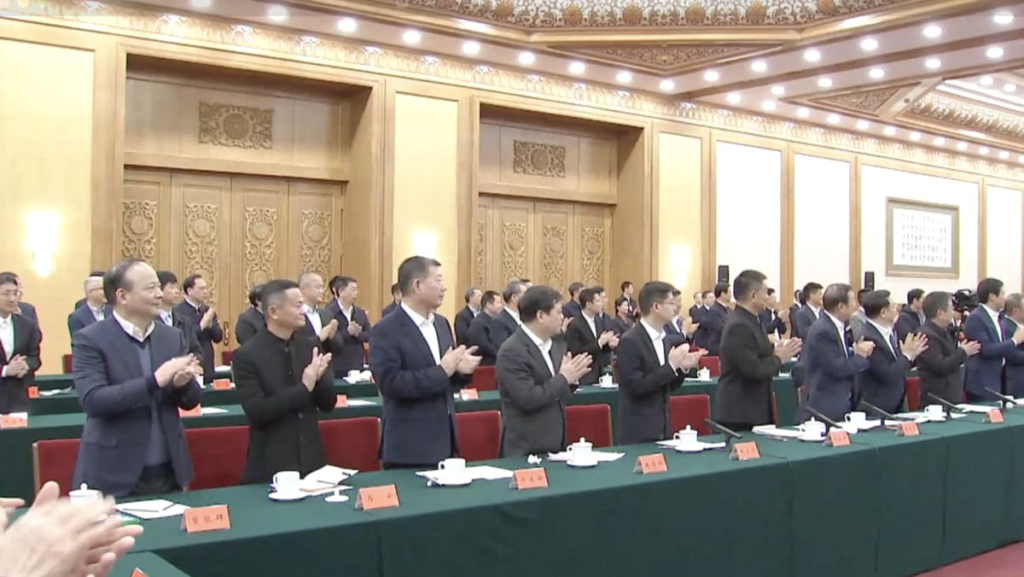ASSESSING CHINA’S MOVES
CMR’s Rein predicts that the symposium’s signals will “cause the equity market to go up again,” bolstering confidence in both China’s A-shares and Hong Kong equities.
He pointed out that some international investors now view America as “too frothy”, while India has “dropped 20 per cent” in the last couple of weeks. This has prompted them to ask: “Where are we gonna go? Let’s put money back into China,” Rein said.
Rein believes this shift is “creating excitement within China again”, as entrepreneurs sense that they can overcome “crippling” sanctions from the US and export bans, and make money.
Meanwhile, Guo cited DeepSeek – a tech success story predating the symposium – as proof that central policies and private innovation can go hand in hand, framing it as “a lot of work” from both the private sector and from central policies over the past few years.
The event aimed to reassure entrepreneurs “that more support to the tech sector will come”, not only on the supply side but also on the demand side, she added.
Pointing to Xiaomi, Tencent, BYD, and Huawei, Guo underlined that “it’s consumption that provides revenue to these companies and helps the Chinese companies to advance”.
Still, Zhang from UTS cautioned that state priorities around data security, antitrust enforcement, and digital assets remain.
“Recently, the government has been tightening regulations in the tech industry … this event could signal a recalibration of industrial policies – balancing market incentives with strategic national goals.”
Despite positive signals of a warming stance, analysts do not expect any immediate overhaul of existing policies.
Deeper collaboration between private firms and state-owned enterprises will take time, CMR’s Rein noted.
“What I hope is there’s gonna be collaboration between the private sector and state-owned enterprises, and that’ll be concrete,” he said.
“Second, I hope that there’s gonna be more money raised to be given to those sectors. I don’t think there’s concrete stuff. It’s more a signal to everybody to go out and invest, go out and innovate.”
He pointed out that the Chinese government already eased off on the tech crackdown a year ago, and began enacting regulatory reforms to support the sector.
“It’s just nobody believed it. That’s the problem … (people) needed a signal more than concrete actions.”
Analysts agree that the upcoming meetings of China’s legislature and top advisory body in March – known as lianghui in Chinese – will likely provide a better sense of Beijing’s strategy.
Lianghui would be more about stimulus size and sector examples, remarked Guo from Hutong Research.
Meanwhile, Rein expects “more concrete measures” to be announced during lianghui to bolster the tech sector as well as “incremental, targeted stimulus measures”.
“China faces a confidence problem, not a money supply one, so measures will help build confidence among entrepreneurs, businesspeople and investors that the government supports the tech and private sector as drivers for growth.”
https://www.channelnewsasia.com/east-asia/china-xi-jinping-symposium-private-sector-tech-crackdown-jack-ma-4942901


